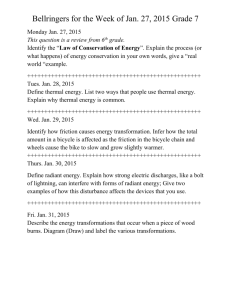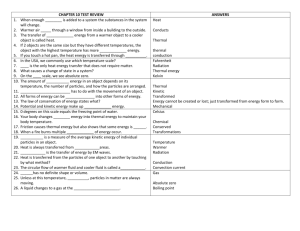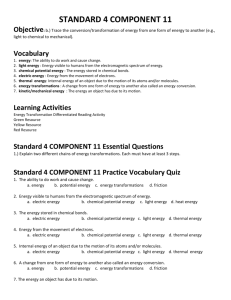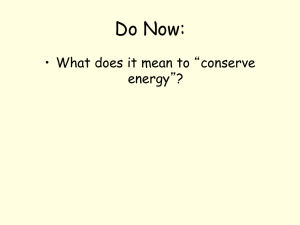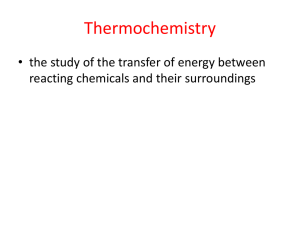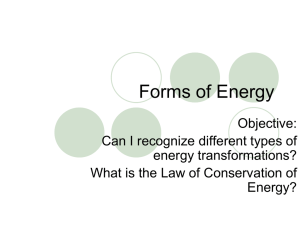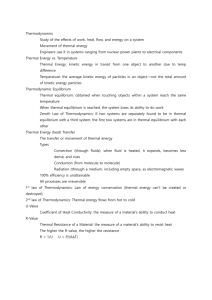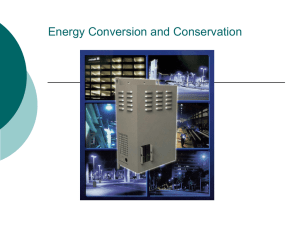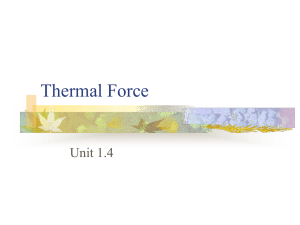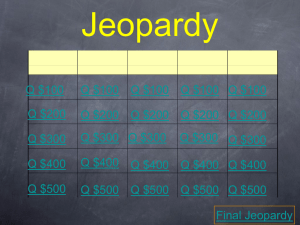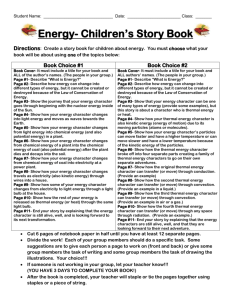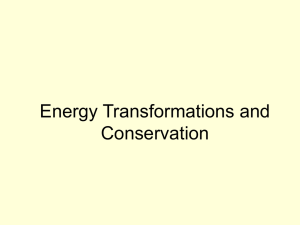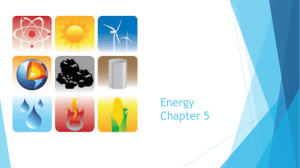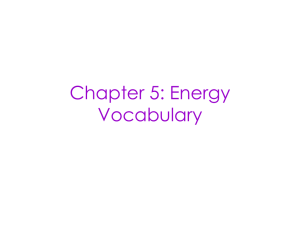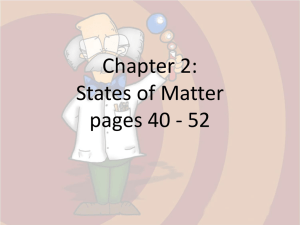Chp. 13:3 Energy Transformations
advertisement
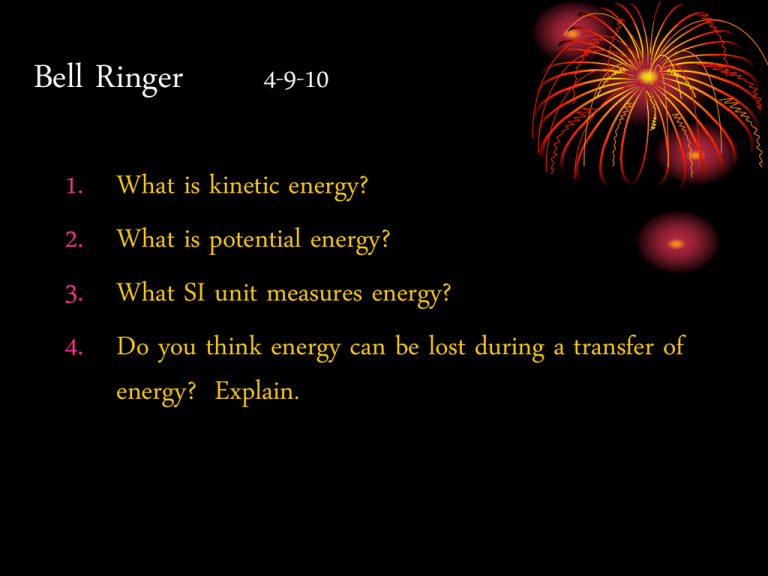
Bell Ringer 1. 2. 3. 4. 4-9-10 What is kinetic energy? What is potential energy? What SI unit measures energy? Do you think energy can be lost during a transfer of energy? Explain. Chapter 13 Section 3 Energy Transformations Energy Transformation • Most forms of energy can be transformed into other forms. • A change from one form to another is called energy transformation. Single Transformations • Toaster - electrical energy thermal energy (to toast your bread) • Cell phone - electrical energy electromagnetic energy (that travels to other phones) • Human body - chemical energy in your food mechanical energy you need to move your muscles and thermal energy to maintain body temperature More Examples • A steam iron __________ energy __________ energy • A ceiling fan __________ energy __________ energy and ___________ energy • A hair dryer __________ energy __________ energy and ___________ energy Multiple Transformations • The mechanical energy used to strike a match is transformed first to thermal energy. • The thermal energy causes the particles in the match to release stored chemical energy, which is transformed to thermal energy. • The light that you see is electromagnetic energy. Another Example • In a car, electrical energy produces a spark. • The thermal energy of the spark releases chemical energy in the fuel. • The fuel’s chemical energy in turn becomes thermal energy. • Thermal energy is converted to mechanical energy to move the car and electrical energy to produce more sparks. Another Example • Using coal to power a generator: Chemical Energy is converted to heat energy (steam) which is converted to mechanical energy (turns blades of turbine) to electrical energy and then back to heat energy (using a toaster at home). • One of the most common transformations is between potential and kinetic energy. • Potential Energy Kinetic Energy Examples of Potential Kinetic 1. Juggling 2. Pendulum 3. Pole Vault Conservation of Energy • The law of conservation of energy states that when one form of energy is transformed to another, no energy is destroyed in the process. • Energy cannot be created or destroyed. • Total Amount of energy is constant!!!! Energy Efficiency • Energy efficiency is how much useful energy you can get out of a system. • In theory, a 100% energy-efficient machine would change all of the energy put in it into useful work. Examples of Efficiency • The human body is less than 5% efficient….most energy is transferred to heat energy. • An incandescent light bulb converts 10% of electrical energy into light and the rest is converted into thermal energy. • Electrical Power plants are about 35% efficient. Heat • During these transformations some energy may be released in the form of heat (friction). • No machine is 100% efficient because friction transforms mechanical energy to thermal energy.
